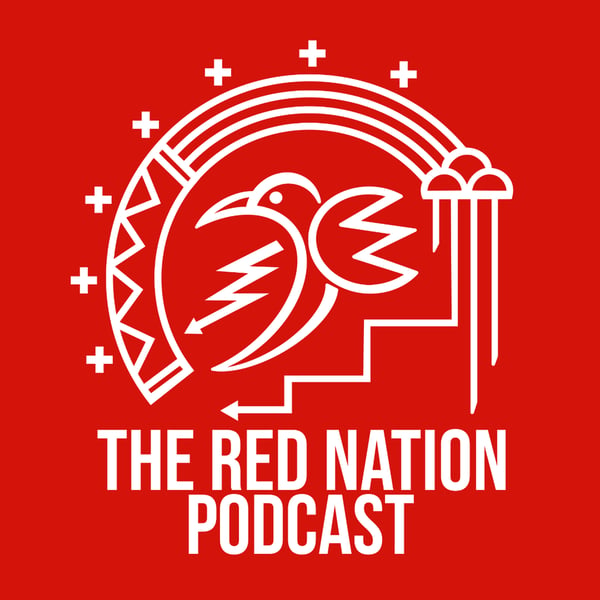No shorts, no losses & the morning star of US imperialism pt. 2 w/ Walter Johnson & Tef Poe
The Red Nation Podcast
The Red Nation
4.8 • 943 Ratings
🗓️ 6 April 2020
⏱️ 69 minutes
🧾️ Download transcript
Summary
This is Part 2 of our conversation from last week.
St. Louis, MO once rose as the morning star of US imperialism. It has also been a laboratory of racial capitalism, from Indigenous genocide and the fur trade to the police killing of Michael Brown in Ferguson. We talk with historian Walter Johnson (@abufelix12) and activist-artist Tef Poe (@TefPoe).
Check out Walter's new book, The Broken Heart of America: St. Louis and the Violent History of the United States: https://www.basicbooks.com/titles/walter-johnson/the-broken-heart-of-america/9780465064267/
And Tef's music: https://tefpoe.com
Support
www.patreon.com/redmediapr
Transcript
Click on a timestamp to play from that location
| 0:00.0 | And I'm going to You know the when I was reading that chapter on the mound cultures and |
| 0:38.7 | coquia and what you were just bringing up, Teff, you know, most people misunderstand, you know, mound is almost like a misnomer in many ways because it, mounds is like, when I dig a hole in my yard, it create a mound of dirt, right? It almost seems half hazard, but these are actual like structures that expand over an entire geography. They're so extensive, you know, St. Louis is at the confluence of the Mississippi and Missouri rivers, right? |
| 1:07.9 | There is an extensive geography, and you point this out in the book Walter about the Mandan and the Arikara is coming from this mound culture but if you go up the river I could tell you where all the mounds are on the river. They look like hills to most people. |
| 1:25.2 | And most people, you know, like in Vermilion, where the University of South Dakota is, |
| 1:30.8 | there's an identified mound there. and there's a series of mounds |
| 1:34.3 | throughout that entire area there's a series of mounds north of Standing Rock the |
| 1:40.0 | Standing Rock Indian Reservation and one one of the things that has always been, |
| 1:44.4 | we've always been accused of is not being, |
| 1:46.9 | or have we frequently called like recent inhabitants |
| 1:50.8 | of like the Northern Plains. But we trace our history of some of our origin stories come from |
| 1:56.8 | Cahokia. We were one of the groups that broke off from that civilization, you know, |
| 2:02.1 | one of the stories goes, came from the south. |
| 2:05.5 | But another story is that instead of burying, you know, the archaeologists will say, well, |
| 2:11.4 | we didn't find any burial grounds. you know and the ones that we did |
| 2:14.9 | only kind of point to a certain time period therefore you know you we only see you as being here for like several |
| 2:21.3 | hundred years but we never buried our dead in the |
| 2:25.5 | ground like you know white people do we would scaffold them and then we would take |
| 2:30.2 | the remains and put them in these mounds and that's where we would you know |
| 2:35.8 | bury our dead and for us they had these these like historic you know cultural but |
| 2:42.1 | also cosmological significance and they're everywhere. |
| 2:46.0 | And you know when I was reading that history of you know St. Louis is literally just like |
| 2:51.3 | leveling these mounds, erasing, you know, the civilization and oftentimes people will say like, well, there's no, you know, there's no, there's no civilization here. |
... |
Please login to see the full transcript.
Disclaimer: The podcast and artwork embedded on this page are from The Red Nation, and are the property of its owner and not affiliated with or endorsed by Tapesearch.
Generated transcripts are the property of The Red Nation and are distributed freely under the Fair Use doctrine. Transcripts generated by Tapesearch are not guaranteed to be accurate.
Copyright © Tapesearch 2025.

